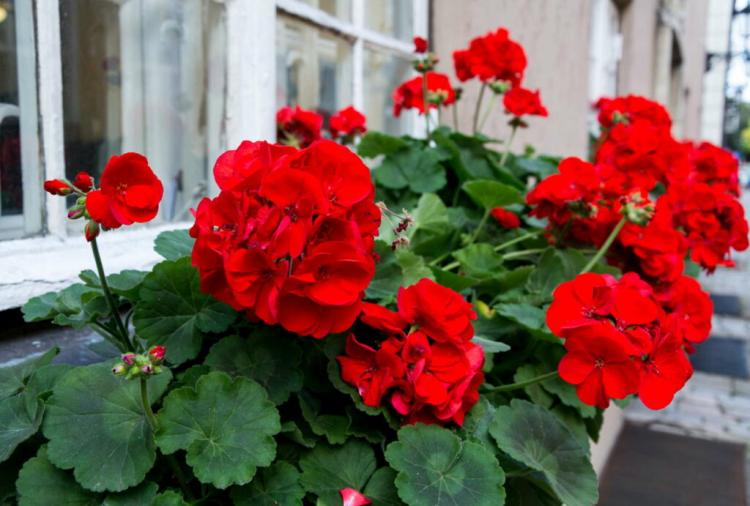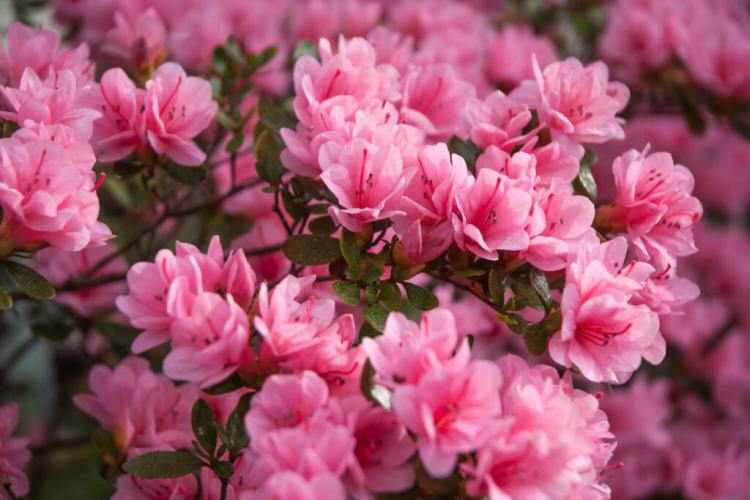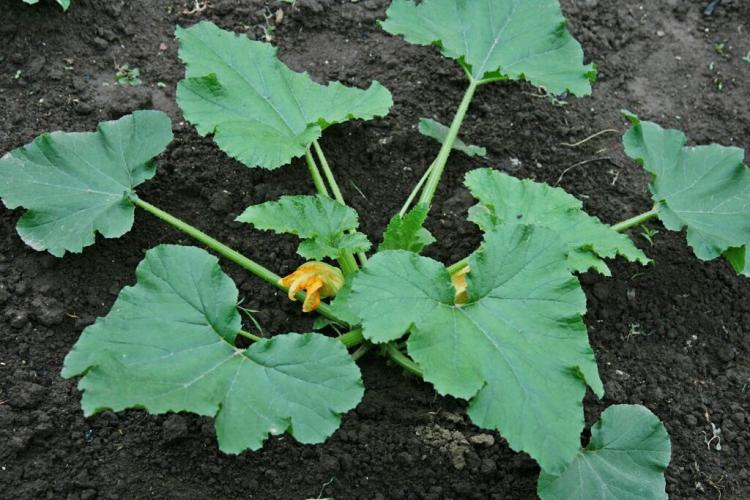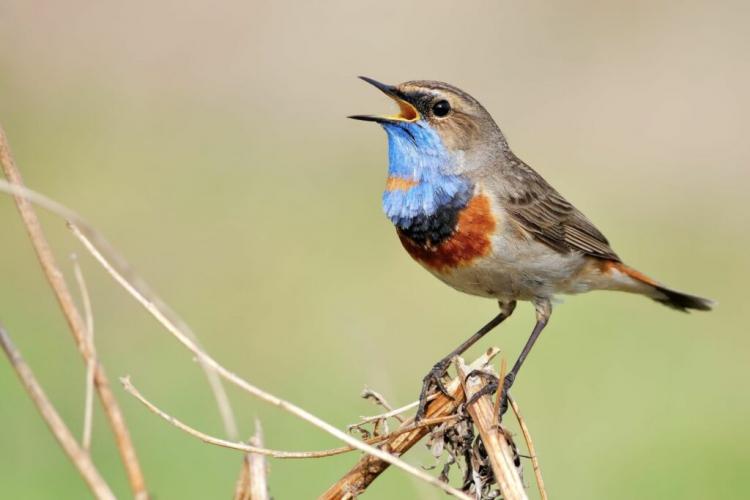Purple Potatoes: Varieties, Cultivation & Uses Of Purple Potatoes
Potatoes are not only available in the typical yellow, but also in bright purple and blue colors. Here we show you which varieties provide variety in your kitchen.
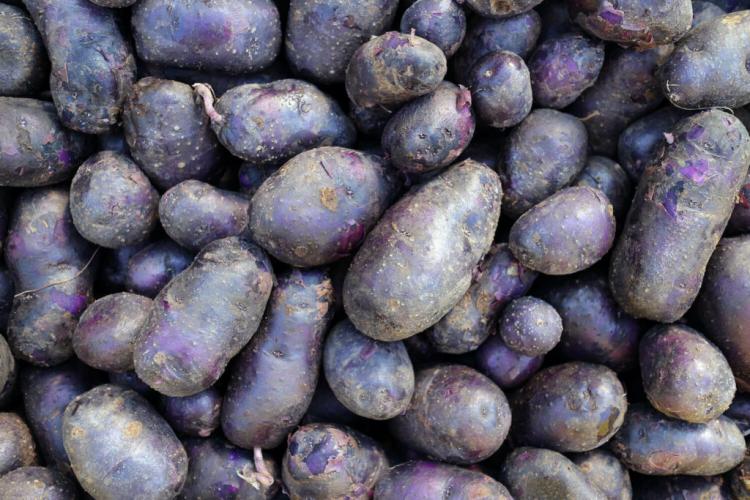
The potatoes immediately catch the eye thanks to their special color [Photo: AN NGUYEN / Shutterstock.com]
The purple, violet or blue potatoes come in pretty much all color nuances. Most of the purple potato varieties are only grown by a few farmers or special lovers and are also rarely found in stores. However, there is a wide variety of varieties that are also ideal for the home garden.
Purple potato varieties
Table of Contents
There are around 100 different types of purple potatoes. We have listed the most important ones for you below.
- Vitelotte: The 'Vitelotte' potato is a late variety with a striking blue and white marbled flesh. It is also often called the truffle potato because of its small elongated tubers. The purple potato convinces with its spicy, nutty taste.
- Blauer Schwede: The 'Blauer Schwede' potato, also known as 'Blue Congo', is a popular waxy variety.
- Blue Elise: The 'Blue Elise' potato, which also bears the name 'Violetta', is a waxy and high-yielding variety that impresses with its strong taste.
- Blue Anneliese: The 'Blue Anneliese' potato is a late, waxy variety. This has only been on the market since 2007. The 'Blue Anneliese' potato is very productive and only slightly susceptible to late blight.
- St. Galler: The 'St. Galler 'potato is a new variety on the market, the color of which is largely retained after cooking. It is predominantly waxy and has an intense taste.
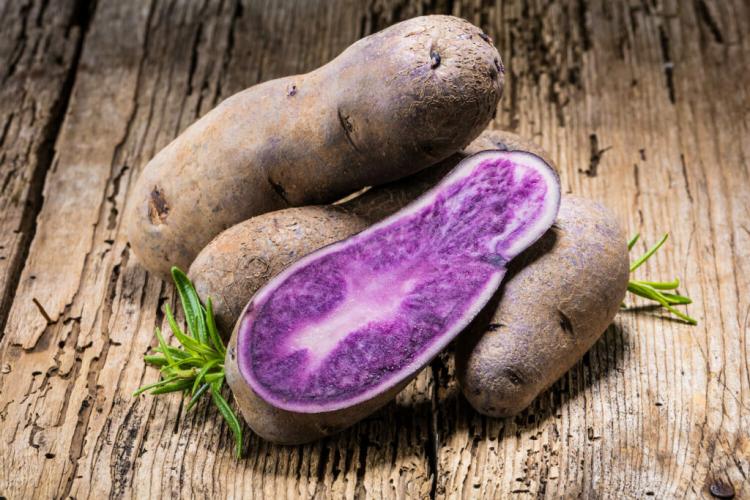
The 'Vitolette' variety has an elongated shape and a particularly marbled interior color [Photo: KarepaStock / Shutterstock.com]
Growing purple potatoes
Purple potatoes are often more susceptible to cultivation and less productive than the yellow varieties used by industry. Since potatoes do not suffer from diseases such as late blight until later in the year, as the pressure of infestation increases here, the harvest time can be pushed forward by a few weeks by pre-germinating the potatoes in the house and thus the rot can be avoided for the most part. A cultivation in your own garden is still possible without any problems and ensures a tasty harvest. You can also grow the potatoes in the tub on the balcony with enough space. For this it is important to use soil that meets the high potassium requirements of the potatoes. Our Potassium-accentuated Plantura organic tomato and vegetable soil is recommended here. In our article on planting potatoes, we give general tips on how to safely grow the tubers in the garden.
Prepare and use purple potatoes
In terms of use, the purple potatoes do not differ from the conventional yellow varieties. The purple potato varieties are also divided into waxy or floury varieties.
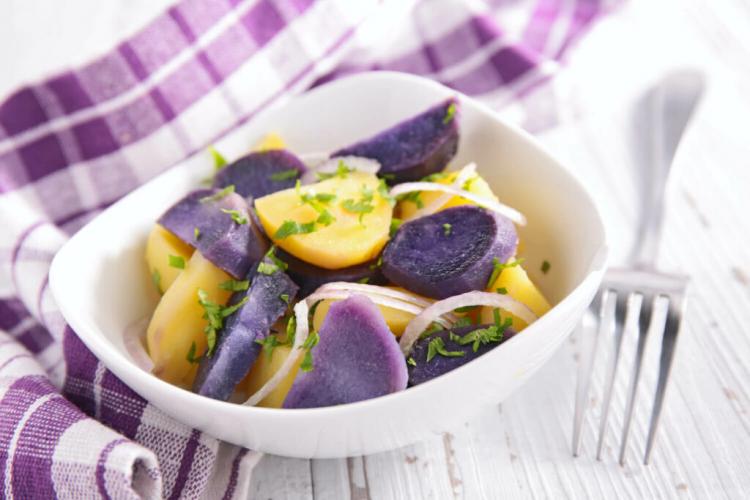
The purple potatoes also cut a fine figure in the mix [Photo: Chatham172 / Shutterstock.com]
These are particularly popular in purple potato salads or mashed potatoes. But also in the casserole, as a soup or simply as a baked potato or French fries, the purple potato varieties taste very tasty. It is best to cook them with their peel on, as this way the color is less lost. Unfortunately, they often have a shorter shelf life than the yellow varieties, but in a cool, dark place, purple potatoes can still be kept for several weeks after harvest. Tips on how to properly store and keep your potatoes can be found in our special article.
How do purple potatoes taste?
The taste of the purple potatoes is very dependent on the variety, but overall rather nutty to chestnut-like with the potatoes 'Vitolette', 'Blauer Schwede' or 'Anneliese'.
How healthy are purple potatoes?
Often the question arises whether the purple potatoes with their color can be healthy. The color of the purple potato varieties comes from the coloring matter contained in the tubers, the anthocyanins. These are secondary phytonutrients. These protect the plant from free radicals. Free radicals are naturally occurring metabolic products in the body, but they can damage cells. The beneficial effects of anthocyanins can also unfold in humans, which is why the substances are said to have positive effects on health, for example in the case of cardiovascular diseases or high blood pressure. The purple potatoes can therefore be a useful and healthy addition to the menu.
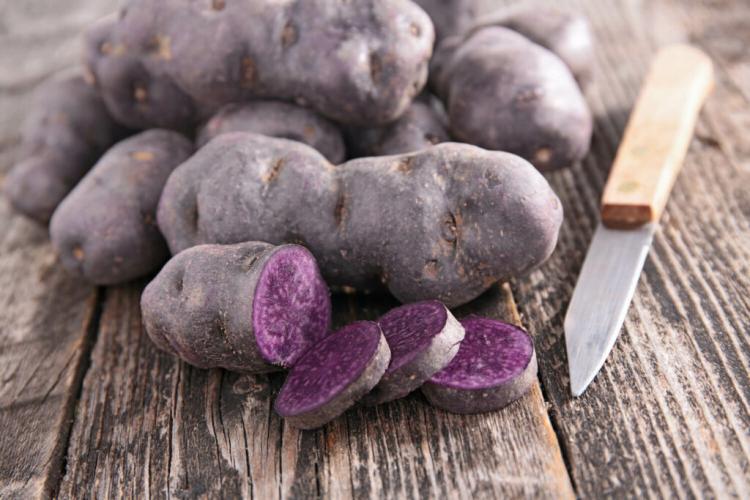
When preparing the purple potato, you will not only find the purple color in the skin [Photo: margouillat photo / Shutterstock.com]
Can you eat blue potatoes with their skin on?
Here, too, the purple or blue potatoes do not differ from their yellow representatives. Many also wonder whether you can eat the purple potatoes with their skin on. But the same applies here as with the well-known yellow potato varieties: Potatoes from your own garden and also those in organic quality can be consumed with their peel. When cultivating in your own garden, make sure that you use every type of plant protection product – including organic products – according to the intended use and adhere to the specified waiting times. So you can enjoy your purple potatoes completely carefree.
Do you want to get to know more types of potatoes? Then take a look at our article on the 50 best potato varieties.


